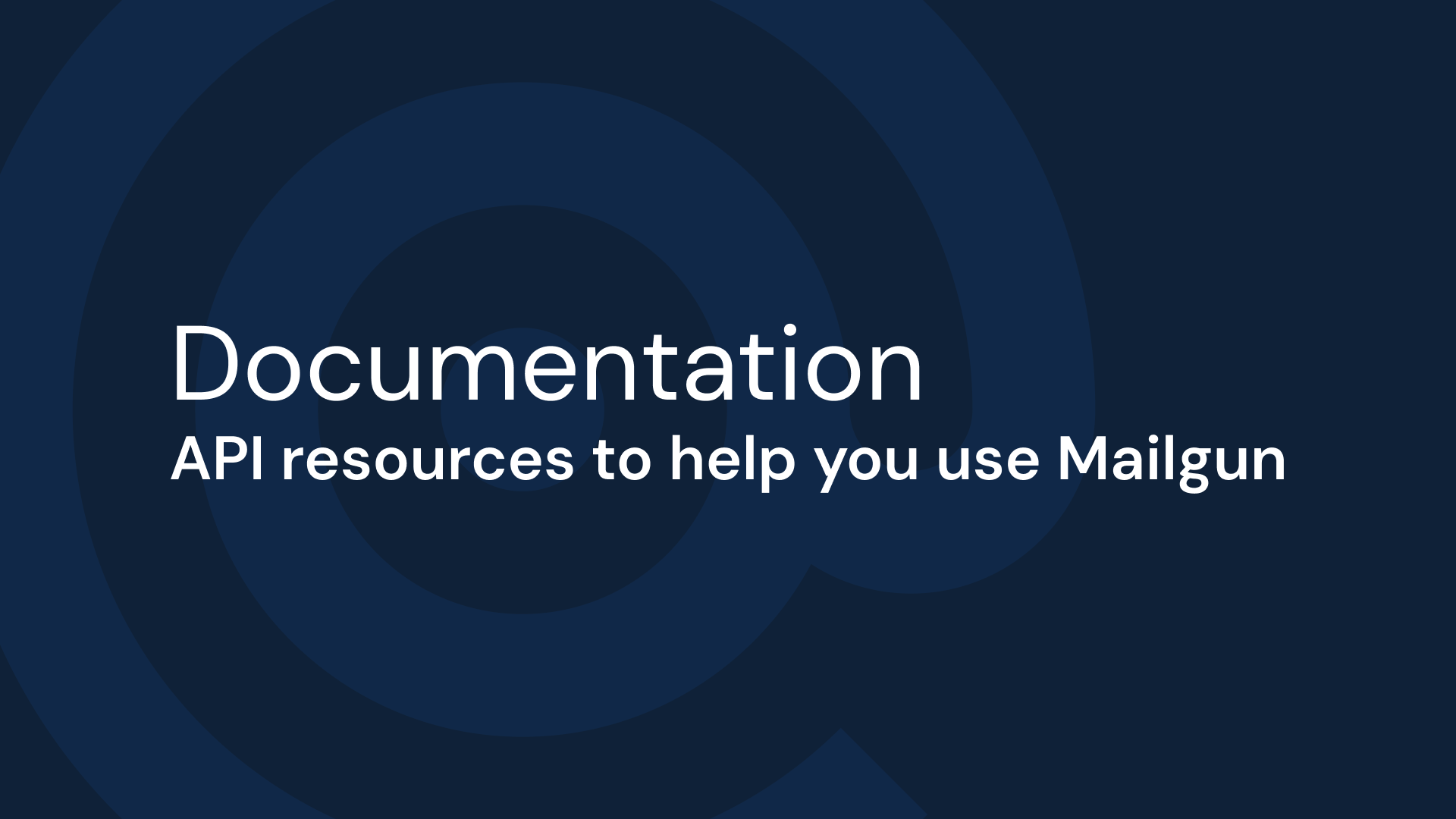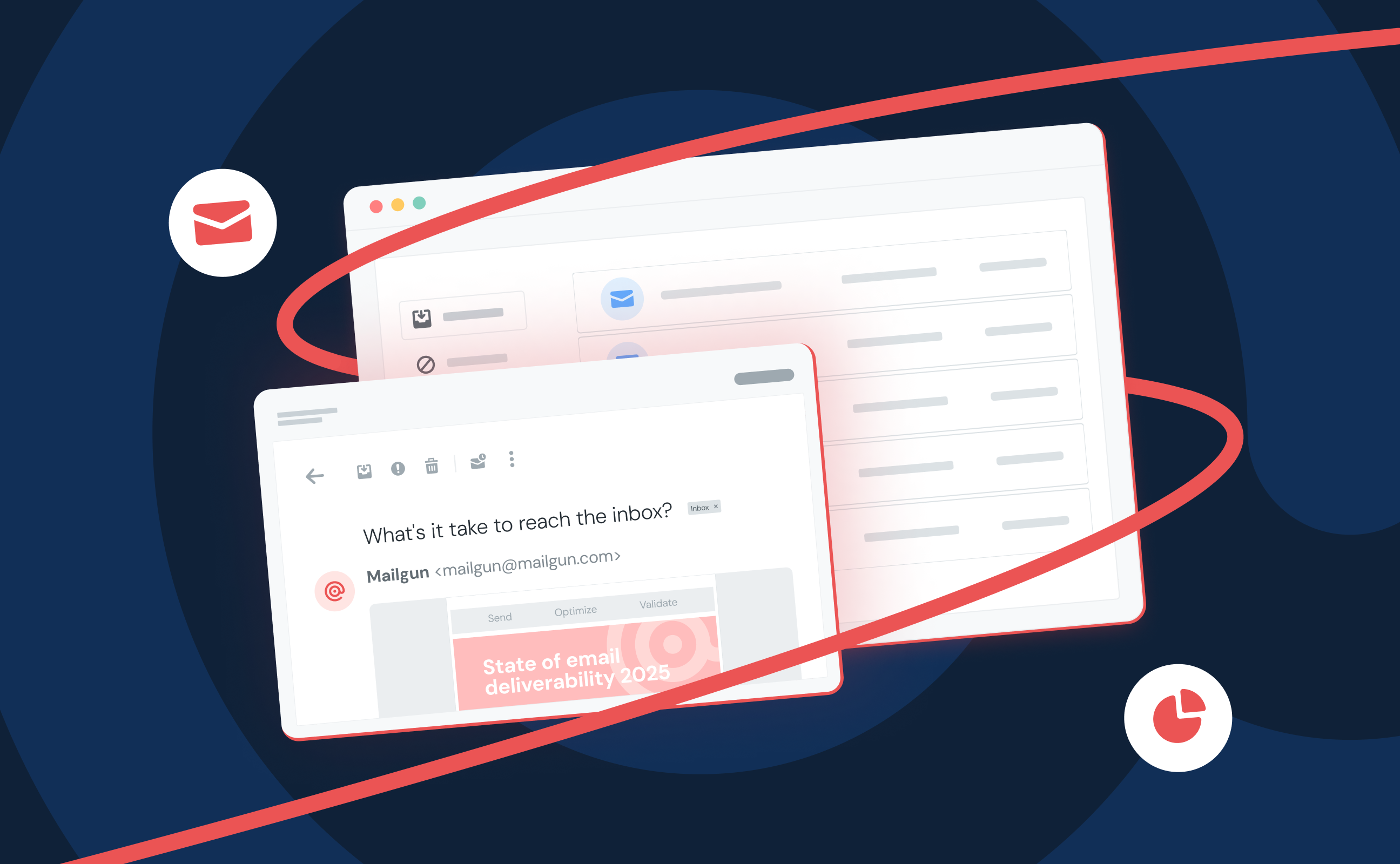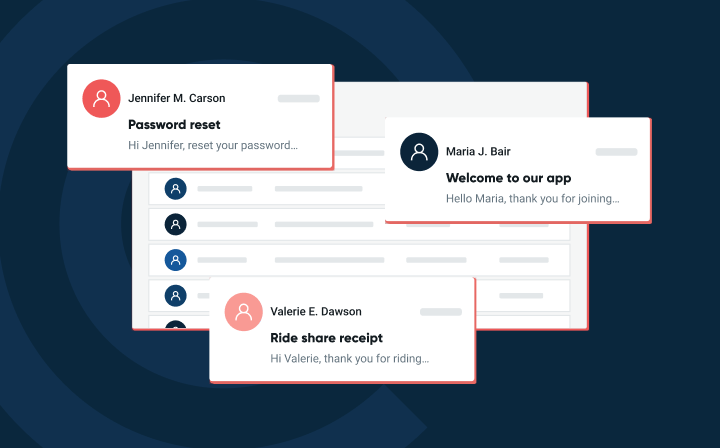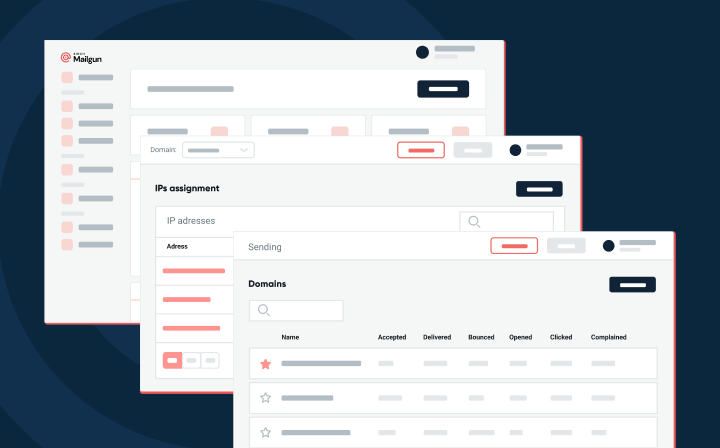Home
Mailgun Blog
Deliverability category
Improve email delivery rate with Mailgun and Mailgun Optimize
Deliverability
Numbers don’t lie: What factors are impacting your deliverability?
Email delivery and email deliverability. For two similar sounding words, these concepts couldn’t be more different, yet they impact one another and metrics like your email delivery rate and complaint rates. Your email messages go on a journey every time you hit send, stick around to learn how to overcome obstacles along the way (especially if you're a first-time sender).
PUBLISHED ON
It’s no secret that many first-time senders struggle with delivery across different mailbox providers. What makes this even more complicated is that your delivery rate might differ from one inbox service provider (ISP) to another. To find out what roadblocks exist for new senders, we set off on a journey to uncover as much information as we could about what impacts deliverability.
Table of contents
What is email delivery?
What is email deliverability?
What is email suppression?
What are soft bounces?
What are hard bounces?
What are hard Complaints?
Email delivery vs. email deliverability
The first step on our journey is to break down email delivery vs email deliverability. These concepts are two sides of the same coin. Email delivery is how you get your messages accepted by your recipient’s mail server and deliverability is about getting your messages into your recipients inbox.
What is email delivery?
Email delivery is the successful process of getting your email message accepted by the receiving mail server. Delivery is successful if your user’s ISP accepts your message. Whether it makes it into their inbox (as opposed to their spam folder) is where deliverability comes in.
In other words, email delivery is all about your message's journey right after you hit send until it reaches (and is accepted by) your recipient’s ISP. When you hit send, your email service provider (ESP), like Mailgun or Gmail, carries your message to a sending mail server where your authentication protocols are verified. Then, your message is forwarded to an ISP’s receiving mail server where your message is either accepted or rejected.
What is email deliverability?
Email deliverability is the successful process of getting your emails into your user’s inbox. If email delivery is about getting past the bouncer and into the club, email deliverability is about getting into the VIP lounge. Landing in your subscriber’s inbox is no easy feat. Your deliverability, also known as inboxing rate, relies on your sender reputation, IP reputation, and email authentication records. If ISPs say your email doesn’t make the cut, or it looks like it contains spammy content, your message can end up in the spam folder.
ISPs are notoriously secretive about deliverability, so it’s pretty hard to measure your inboxing rate. However, Mailgun’s Inbox Placement tool helps you determine the likelihood of your email making it into your reader’s inbox across various email clients. You can also check out our guide on how to improve your deliverability.
How do I calculate my delivery rates?
While email deliverability is hard to calculate, email delivery is relatively straightforward – regardless of the type of email that you’re sending, like email newsletters, email marketing campaigns, product announcements, or release notes. Check out this formula:
Delivery rate = (Number of emails sent - Number of hard bounces) / number of emails sent * 100

To find your delivery rate for any email campaign:
Take the total number of emails sent.
Subtract the number of hard bounces (or undelivered emails).
Divide all this by the number of emails sent.
Multiply by 100 for your delivery rate as a percentage.
If you want to optimize your delivery data for better decision-making, try utilizing a deliverability suite like Mailgun Optimize to test and manage how you land in the inbox.
What impacts delivery rates?
There are two points in the email sending process in which your delivery rate might be impacted: at your sending ESP and at the receiving ISP.
In short, delivery failure happens when the sending ESP blocks your email message before it gets sent out. Alternatively, the ISP can also stop your email from getting to your user.
Some of the factors impacting your email delivery (and your delivery rate) include:
Email suppression
Soft bounces
Hard bounces
Let’s get into each of these below.
What is email suppression?
Bounces are obvious obstacles along the email journey, but suppressions shouldn’t be overlooked.
Emails can be suppressed due to hard bounces, unsubscribes, or complaints. Some ESPs, like Mailgun, will try to help your delivery rates by suppressing these emails automatically. But why does Mailgun do this? Just because a user’s email address bounces doesn’t necessarily mean they don’t want to receive information from you anymore.
Instead of removing customer data from your customer relationship management (CRM) software, ESPs like Mailgun can suppress these invalid email addresses and place them on an email suppression list until you decide what to do with them. When you send to an email address that’s on the suppression list, the ESP will refuse to deliver your email message. In this case, since the failure is on your end, you can take action via your ESP to sort out the delivery failure as needed.
What are soft bounces?
Email soft bounces are temporary delivery outages. Usually, the factors affecting the soft bounce are out of your control. For instance, perhaps your user’s mailbox is too full. Or either the sending or receiving mail server may be temporarily down. Perhaps your ESP is having temporary technical difficulties. Lastly, you might be temporarily disconnected from the internet.
As you can see, these are all temporary issues that either prevent your ESP from sending your message or an ISP from placing your message. As such, soft bounces are usually temporary failures. Of course, you can always see how bounce management software can help you minimize your email soft bounces.
What are hard bounces?
Email hard bounces are permanent delivery fails that happen because of various factors along the delivery journey. For instance, you might be trying to send an email message to an invalid email address. Perhaps your sender reputation is in jeopardy with a particular ISP.
Mailbox providers care about the relationship that you (the sender) have with your email recipients. The more your contacts open your emails, the better your open rate and the more you’ll form a pattern of (good) recurring behavior. Think about it: Reputable senders generally have a loyal customer base that they send to frequently. If this is the first time a segment of your contacts hears from you, don’t expect to be let in immediately.
At the other end of the spectrum, you’ve got spammers that generally acquire lists in nefarious ways and blast out messages. Since sending to a massive email list of new contacts mimics this behavior, when mailbox providers see a high rate of first-time messages from a single IP, they may get a little trigger-happy and block the IP. At the end of the day, mailbox providers look out for their customers to keep them safe from spammers, which is why they track these sorts of metrics.
But what does this mean for you? The more spam or abuse complaints you receive, the more bounces you’ll get. Basically, a high bounce rate means that ISPs see a red flag about your email-sending practice. It’s a bit of a chicken-and-egg problem. The more bounces you get, the more bounces you’ll get. But we’ve got you covered. Check out our bounce management system, and learn how to minimize your email bounces.
What are hard Complaints?
So, what else did we find on our journey to explain deliverability hurdles? Two words: junk mail.
Unwanted mail can now generate complaints when messages hit the junk folder at different mailbox providers. Every time your contacts mark your messages as “Junk”, it’s factored into your overall complaint rate, which considers the number of messages marked as junk, over the number of emails sent in a specific email program.
Best practices tell us that this complaint rate should be less than 0.1% (one-tenth of one percent) with each ISP, so if your complaint rate is much higher than this, consider going back to your list and check for contacts with low engagement for future email sends. Keeping track of your complaint rate as a performance indicator provides great insights into user behavior – and Mailgun captures these complaints which means you’re in a better position to offset junk mail complaints.
How deliverability tools can help
You’re not alone if you’ve been experiencing issues with delivery across different mailbox providers. With the findings we’ve shared here, we hope that you can get things back on track and, at the very least, have more clarity around what’s happening to your messages when they reach the inbox.
If this all sounds like too much to handle solo don’t worry, we’d never leave you to journey alone. Check out our Mailgun Optimize suite of deliverability tools, and let us help you proactively monitor your account and achieve better deliverability. Try us out for free!







